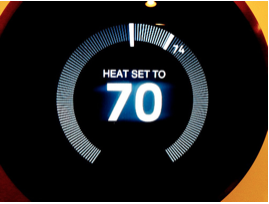The Internet of Things is a rapidly expanding field that includes everything from home management systems to wearable fitness trackers to connected cars. These devices offer a degree of connectivity that makes them capable of far more than they might do on their own. With the right application, you can maximize the usefulness of these items, provided that a strong storage system like the cloud is available.
Defining the Internet of Things

Image via Flickr by brendan-c
The Internet of Things, or IoT, is subject to many definitions, with some disagreement as to exactly what is encompassed in this broad and continually-evolving category. At its core, the Internet of Things is comprised of items that are connected via a network. This element of connectivity makes otherwise ordinary items capable of new and innovative tasks.
The Cloud and IoT Connectivity
The cloud offers the remote storage necessary for most IoT products to function. Any information that isn’t stored directly on the device must be stored in the cloud. Since connectivity is a key element of any product considered an IoT device, the cloud is a crucial element for basic functionality of most of these items.
Products that use the cloud have three core components. First is the device itself, which encompasses the basic software and hardware necessary to perform its functions. Second is the gateway which connects this device to a network. This may be a home network or office network. This network connection allows the item to transmit data to the cloud. From the cloud, the information is accessible to an end user via the associated application.
IoT Without the Cloud
It is possible for IoT devices to function without using the cloud. However, this requires another means of storage for information that’s generated by these devices. Many IoT items produce a tremendous amount of data. Consider a smart thermostat that tracks internal and external temperatures, manual adjustments, home activity, and energy efficiency over the course of years. The thermostat uses this data to design highly efficient temperature management systems, but it requires a lot of storage space to do so.
The cloud is a flexible solution that allows developers to pay only for the storage and processing power that they actually need. It alleviates the need for costly data centers and eliminates the possibility of running machines that aren’t fully utilized.
Hazards of IoT and Cloud Connectivity
Perhaps the most obvious drawback of using the cloud for IoT devices is security. Many of these items have sensitive data, such as the security camera in your home, or the lock that remotely manages access through the front door. If you’re developing products and devices that use the cloud to power the IoT, make sure you address all aspects of security from the product to the cloud and all points in between. Keeping data safe is critical when you’re producing items that offer daily functionality in settings such as hospitals and homes.
The cloud and IoT go hand-in-hand, with cloud services offering the ideal answer for products that need instant access to flexible storage space. Combined, the two can present seemingly limitless possibilities.
